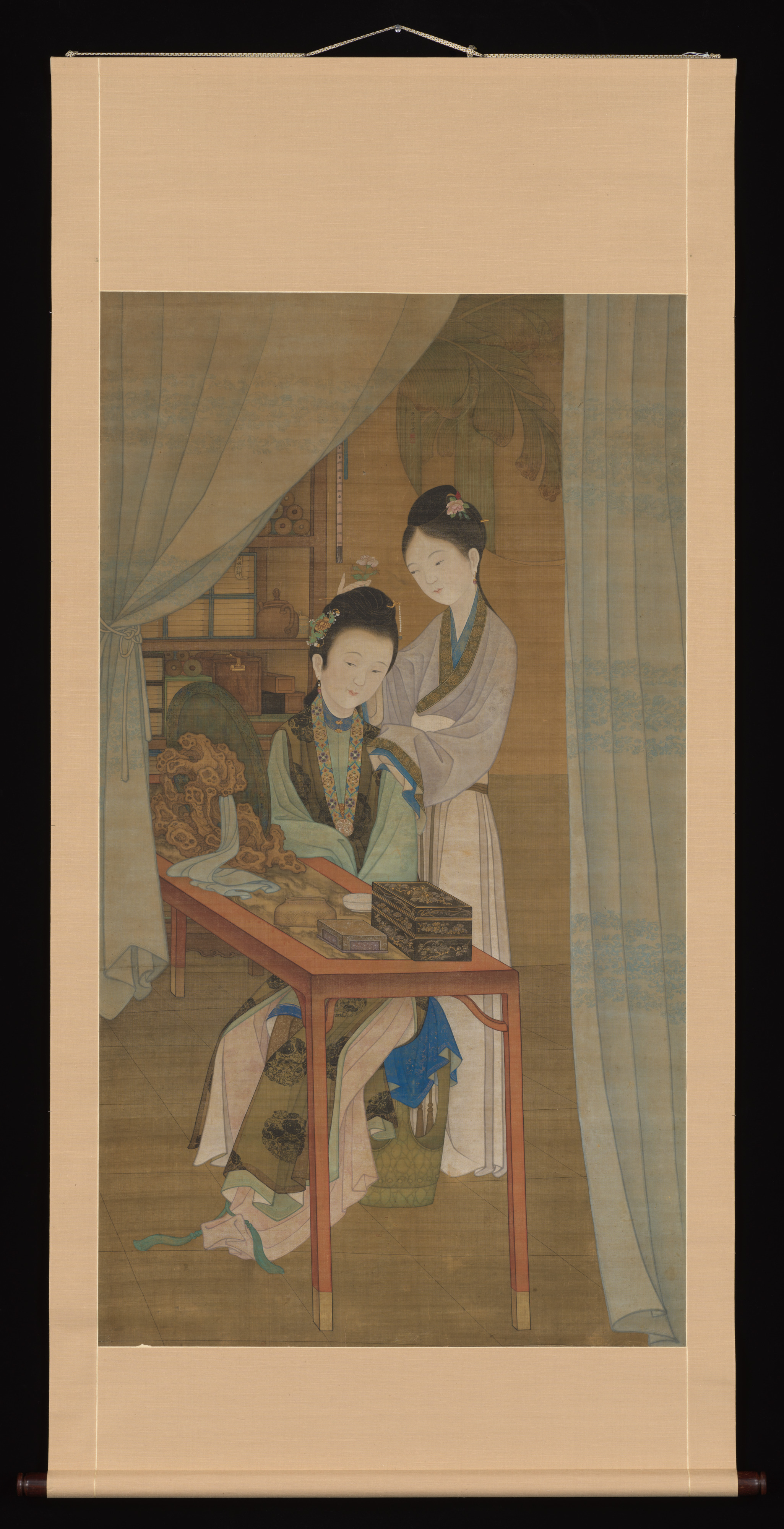Woman at her dressing table
Attributed to Leng Mei Chinese
Not on view
A woman sits before a large bronze mirror at a dressing table. Her attendant, who stands behind her, places a sprig of blossoming China rose into her coiffure. Glancing sidelong into the mirror, the seated woman beholds her reflection.
The setting is a finely appointed studio with a scholarly air, filled with books and scrolls of painting and calligraphy. A large banana plant, visible through a circular window, indicates that the room is adjacent to a garden. The luxurious accoutrements that fill the interior space indicate the woman’s education and refinement. Among the books that fill the shelf behind her, a single title is visible: Retrospective of poems by Famous Women (Mingyuan shigui 名媛詩歸), an anthology of poems written by female authors throughout Chinese history. On the table, an inkstone and a water pot indicate that the woman herself is a writer.
Other accoutrements suggest that the woman may be a courtesan. These include the boxes on the table—made for storing cosmetics and adornments like hairpins and earrings that she wears—and the flute hanging on the wall behind her, a nod to the association between musical entertainment and the pleasure quarters. In premodern China, the loftiest courtesans were women of status and power whose ability to engage in poetry and other scholarly arts was part of their appeal for their companions. The artist who painted this work captured well the combination of scholarly elegance and sensuous luxuriousness that would have made the courtesan’s quarters a place of unique allure. The curtains that open to reveal the scene to the viewer heighten the sense of a stolen glimpse into a privileged space.
The artist has paid obsessive attention to the objects that fill the space, creating a riot of layered textures. The tiers of patterned silks that adorn both women, the nesting lacquer boxes, the lovingly described mottled pattern of the stone inlaid into the table top, the gnarled rootwood stand that supports the mirror—all of these add to the sumptuousness of the artwork and were clearly core elements of the painter’s craft.
The painter Leng Mei, to whom this artwork is attributed, trained at the court of the Kangxi Emperor, where European painting techniques were fashionable and were sometimes incorporated into Chinese paintings. This hybrid visual mode is evident in the current painting in the teapot to the proper right of the seated woman’s head, which reveals an awareness of how to create the illusion of spatial recession and how shading in the European fashion can impart a sense of volume. Shading has also been applied to the legs of the table to indicate a single light source, a technique that was not used in China prior to its adaptation from European painting in the seventeenth century.
Due to rights restrictions, this image cannot be enlarged, viewed at full screen, or downloaded.
This artwork is meant to be viewed from right to left. Scroll left to view more.



